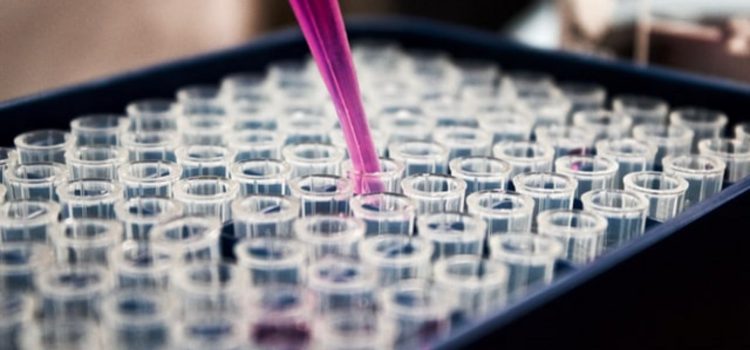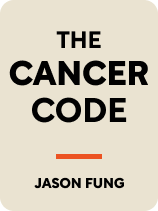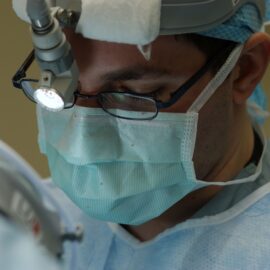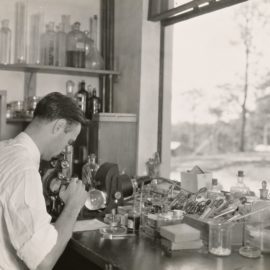

This article is an excerpt from the Shortform book guide to "The Cancer Code" by Jason Fung. Shortform has the world's best summaries and analyses of books you should be reading.
Like this article? Sign up for a free trial here.
How close are we to curing cancer? What are some promising therapies for treating cancer?
We’ve come far in our understanding of cancer, resulting in a number of promising treatments with fewer side effects. In fact, we may be nearing a turning point in the way we treat cancer.
Here’s a look at promising future cancer treatments.
Promising Cancer Treatments
With a better understanding of how cancer operates and how the body fights against it, there is hope for safer and more effective treatments. One of the potential future cancer treatments that holds a promise is immunotherapy: activating and strengthening the patient’s natural immune response. Fung points out that cancer doesn’t simply overwhelm our body’s defenses like a deadly infection does; instead, it evolves methods to hide from those defenses.
Therefore, forcibly activating the immune system and teaching it to target cancer cells—essentially, giving the patient a “cancer vaccine”—is highly effective. Furthermore, regardless of how the malignant cells continue to mutate, the immune system will still recognize them as foreign and destroy them.
(Shortform note: Immunotherapy is currently used as a cancer treatment, with mixed results. Depending on the type of cancer, immunotherapy drugs are effective in anywhere from 20% to 50% of cases. One study found that immunotherapy increased the five-year survival rate of a certain type of lung cancer from 5.5% to 15%. In short, immunotherapy can be effective, but it doesn’t seem to be the type of silver bullet that Fung implies it could be.)
Another strategy Fung discusses is adaptive therapy, developed by oncologist Robert Gatenby. Adaptive therapy uses standard chemotherapy treatments, but it aims only to keep the cancer at a manageable level instead of wiping it out entirely. This goes against the currently accepted practice of subjecting cancer patients to the strongest doses of drugs and radiation that they can withstand.
Gatenby’s reasoning is that the usual approach to chemotherapy creates extremely strong evolutionary pressure; if any malignant cells survive, they’re sure to be the ones most resistant to treatment, and those cells then pass their resistance on to a whole new generation of cancer.
Therefore, he believes that lower, less frequent doses of chemotherapy will be more reliable in the long run—there will be less pressure for the cancer cells to develop resistance to the treatment. Furthermore, drug resistance is costly in evolutionary terms; in the absence of those drugs, the cells without such resistances will be more successful. In this way, adaptive therapy seeks to turn cancer against itself by allowing the non-resistant cells to outcompete the resistant ones, then introducing another round of chemotherapy to beat them back.
While cancer is unlikely to be eliminated completely by such a strategy, Gatenby hopes that it will keep the disease stuck at an easily-managed level. This could allow more cancer patients to live longer and more normal lives than current chemotherapy methods provide.
(Shortform note: In Gatenby’s paper proposing adaptive therapy, he also said that, in some cases, he was able to achieve a stable tumor size with decreasing chemotherapy doses and increasing intervals between treatments. In other words, far from evolving resistance to chemotherapy, the cancer was actually becoming more vulnerable to it as non-resistant cells repeatedly outcompeted resistant ones. Gatenby, while acknowledging that this is a very early result and that his method needs a great deal more study, said that his results suggest adaptive therapy could eventually cure some cancers entirely—the disease would reach a point where all of the malignant cells are susceptible to chemotherapy, and would be wiped out by the next treatment.)
These methods represent a major change from previous strategies, which unknowingly played to cancer’s greatest strengths: reproduction and evolution. Currently, the favored strategy is to simply blast away at the disease with toxic drugs and radiation until nothing remains, but even this approach requires doctors to overcome cancer’s constant replication and mutation—not to mention the devastating side effects the treatment regimen has on the patient.
Fung believes that, with this new model of cancer as an evolving species, there is hope for the future of cancer treatment. He acknowledges humanity still has a long fight ahead of it, but he says we’ve started gaining ground in that fight for the first time.
(Shortform note: Even with all of these new discoveries and theories, developing treatments for cancer is a slow and expensive process. New drugs require numerous studies for effectiveness and safety before they can even be tested on humans, and even then, clinical trials must be done carefully and under strict regulations.)

———End of Preview———
Like what you just read? Read the rest of the world's best book summary and analysis of Jason Fung's "The Cancer Code" at Shortform.
Here's what you'll find in our full The Cancer Code summary:
- A guide on what cancer is and how it works
- A deep dive into the three different models of cancer
- Why there is hope for the future of cancer treatments






